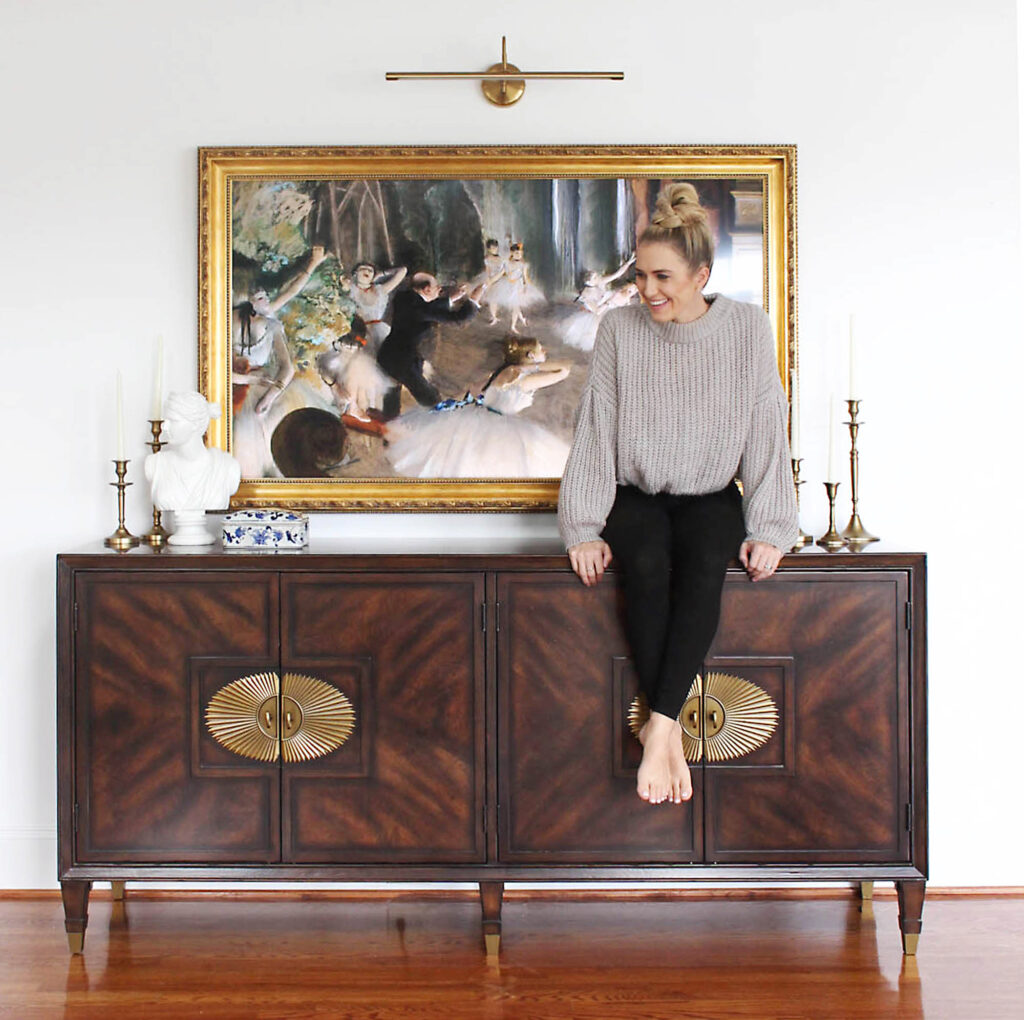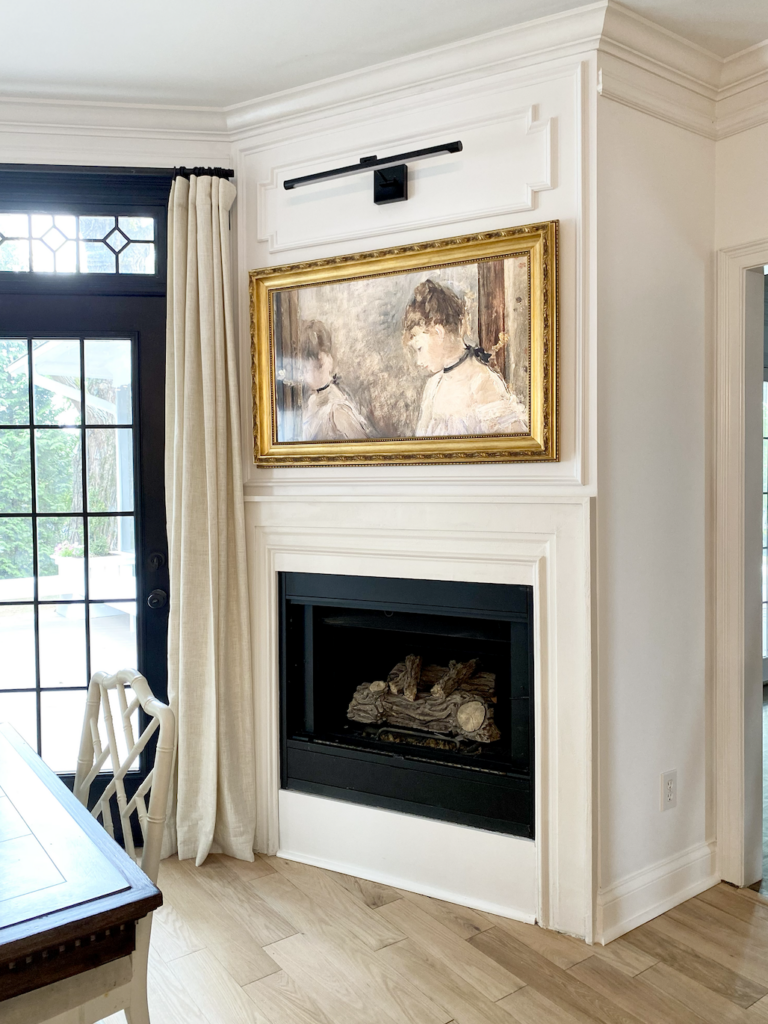There is nothing that elevates a space more than artwork on the walls. I’ve loved creating all types of at-home galleries over the years, but eventually I wanted to elevate it to the next level. My new favorite way to do this is by using picture lights!
Today on the blog, I’ll be giving you my comprehensive guide on everything you should know about picture lights. Although this is a small detail, it completely elevates your entire living space.
Plug-in Picture Lights or Battery-Operated?
Let’s start with one of the most crucial decisions you’ll need to make when it comes to picture lights: Should you go for plug-in or battery-operated lights?

Plug-in picture lights are the more traditional choice. They offer a consistent and reliable source of power, ensuring that your artwork is consistently illuminated. These lights require an electrical outlet nearby, so you’ll need to plan your artwork placement accordingly. If you’re worried about cord covers, don’t be. Use a cord cover and just paint over it to match your wall.
On the other hand, battery-operated picture lights are an excellent option if you want to avoid visible cords and don’t have easy access to an electrical outlet near your artwork. They provide flexibility when it comes to placement, and many models offer remote control options for easy operation. However, you will need to replace the batteries periodically, which can be a hassle if you have numerous picture lights, or if they’re hung up high.
What size picture light is best?
Size matters when it comes to picture lights. Choosing the right size ensures that your artwork is evenly and adequately illuminated. Here’s a general guideline to help you select the appropriate picture light size:
- Match the Width: Ideally, the width of your picture light should be half to two-thirds the width of your artwork. This helps distribute light evenly across the entire piece and prevents hot spots or shadows.
- Adjustable Arm Length: Some picture lights come with adjustable arms, allowing you to fine-tune the size to match your artwork perfectly. These are a great choice for those with varying artwork sizes.
- Consider Proportions: Take into account the size of your frame and the space around your artwork. You don’t want a picture light that overwhelms the entire piece or looks out of place.
Where to hang picture lights
When hanging picture lights, there are a few different things to keep in mind. Here is a list of factors to consider when playing around with placement:
- Above the Artwork: The most common and effective placement is directly above the artwork. Position the light at a 30 to 45-degree angle, aiming it downward. This minimizes glare and creates a beautiful spotlight effect on your artwork.
- Height Matters: Adjust the height of your picture light so that it’s centered on the artwork and about one-third down from the top. This will ensure even illumination and highlight the details of your art.
- Spacing: For a gallery-like appearance, maintain consistent spacing between your artworks and their corresponding picture lights. This spacing should be about one-half to one-third the width of the artwork.
- Multiple Lights: If you have a collection of artworks on a single wall, use multiple picture lights to ensure each piece receives its own dedicated illumination. This method creates a visually appealing gallery effect.
What light bulbs are best?
The type of light bulb you choose can significantly impact the look and feel of your artwork. Here are some considerations when selecting the best light bulbs:
- LED Lights: LED lights are a popular choice for picture lighting due to their energy efficiency and long lifespan. They produce minimal heat, which is essential for preserving the integrity of your artwork over time.
- Color Temperature: Consider the color temperature of the light. Warmer tones (around 2700-3000K) can create a cozy and inviting atmosphere, while cooler tones (around 4000-5000K) offer a crisper and more contemporary look. The ideal temperature depends on your personal preference and the style of your home.
- CRI (Color Rendering Index): Look for bulbs with a high CRI rating, ideally 90 or above. A high CRI ensures that the colors in your artwork appear true and vibrant under the light.
- Dimmable Lights: If you want to adjust the light intensity to suit different moods and occasions, consider dimmable LED bulbs. This flexibility can enhance the overall ambiance of your space.
Where to purchase picture lights
There are a ton of options for places to purchase picture lights that cater to all price points. For a more budget-friendly option (and one I’ve repurchased over and over) is from Amazon. To shop the same light I have in my home, click here.

If you’re looking for a more unique, customized option, Rejuvenation is the perfect place to shop. They have tons of options available based on every design taste or preference. If you’re not a gold fan, there are some gorgeous silver or black options as well.
What do you think of picture lights? Let me know in the comments! And to keep up with everything on the blog, check out my latest posts:
Leave a Reply